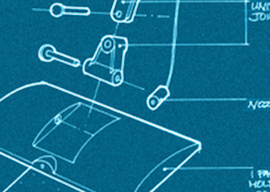Lately, the term “innovation” has developed something of a bad reputation in certain organizations. Why the disenchantment? There are surely a number of reasons, but experience tells us that this aversion is often rooted in past innovation initiatives that lacked sufficient grounding in sound business thinking.
When mature organizations task a team—internal or external—with finding new opportunities to grow, they often fear that being too open about their work will hinder that team’s powers of innovation. They worry that exposing where they’ve been, what they’ve tried, and what challenges they face will hamper the team’s ability to design ideas that will push the business forward in big ways. This risk of incremental innovation—or worse yet, stagnation—is real and should not be ignored. But the right team, armed with the proper tools and an intimate knowledge of the current business’s operating model, competencies, and limitations, can be a powerful generator of truly effective innovation.
The key to success is to take a business-minded approach to innovation. Brainstorming exciting new ideas and designing early models is exhilarating, but successful implementation of innovative new products, services, and strategies only happens when these efforts are matched by the thorough evaluation resulting from the rigor of business thinking. If you’re running an innovation implementation team, consider applying this methodology to your project.
Early on, when defining the right problem to solve, analyze your organization’s business climate and equip the team with the tools they’ll need to succeed. On the customer side, surface what’s most important to improve in the customer experience. At the same time, have the team identify meaningful problems in an attractive market that the business is uniquely positioned to solve.
Note: ideas that are compelling for customers are sometimes difficult for an organization to implement without shifts in their business model or investments in new capabilities. Considering these required shifts or investments as ideas take shape will ensure that each concept is supported by a clear definition of what’s required to bring it to life.
Doing this well demands that you see each organization as a particular collection of people and processes. Since employee roles, reporting structures, and internal mechanisms will dictate how problems get solved, it’s advisable to spend focused time one-on-one with employees at multiple levels and across multiple functional areas. Such a qualitative approach is labor-intensive, but it’s the only way to get a real understanding of how a company operates, what it takes to get things done, and where the opportunities to stretch reside.
Coming up with ideas is fairly easy. But ideas that can’t be made real have no value for a business. There are many great ideas stashed in the fat folds of large and small companies alike. Workshops happen, cool drawings are made, and many of them inevitably wind up in one person’s drawer or tucked behind an office door. And they die there. One common cause of this phenom is that the ideas exceed the risk appetite of senior leadership. Senior leaders are accountable to shareholders, to their managers, and to their teams, and a bad decision can have a significant impact on the health of the organization. A realistic evaluation of a business’ willingness to move into new spaces, early on in the innovation process, can help. It will direct outcomes that push the bounds of what is feasible within a clearly defined opportunity space. It will also inform the team of when they’re stepping over the line. And if they do decide to go there, they are going there knowing that they need to develop a very compelling case for doing so.

Once the problem is well-defined and you begin working on shaping the right solutions, you must work in partnership with experts throughout your organization to ensure that all ideas are supported by a strong business case. The right solution for the organization is one that demonstrates clear and measurable strategic and financial value. What matters to one company may not matter to another. A component manufacturer, for example, may care most about inventory turns and manufacturing capacity measures, while a large consumer products company may care most about gross profit and its ability to continue to fund below-the-line expenses.
The considerations involved in estimating the impact of an idea are sure to vary from organization to organization. While many of innovation projects are sponsored by the product management functions, it’s still a best practice that the team work closely with individuals in, say, finance, manufacturing, procurement from early in the innovation process to ensure they understand what the right solution looks like for the business.
Once outfitted with the right solutions, teams face many challenges in guiding their effective implementation. At this point in the innovation process, the ideas that endure are those that directly meet the complexities of the organization. The only way to do this is to work in concert with all functions needed to bring the idea to life. This means being willing to have tough discussions, to nudge without being naive, to sit in a few extra meetings, to run workshops—ultimately to carry the work straight into the heart of the organization. Commit the time and resources during implementation to drive the business in achieving the right execution.
Investment in innovative new ideas must happen on top of the investment already required to maintain business as usual. And resources are never limitless. If the team tasked with innovation has a realistic understanding of how the business currently operates, where it has capacity to expand, and when ideas require significant stretch (in resources, capabilities, and investments), they can intelligently prioritize new opportunities by balancing customer need with organizational readiness. This will ultimately allow them to lobby effectively to bring their great new ideas to life.




